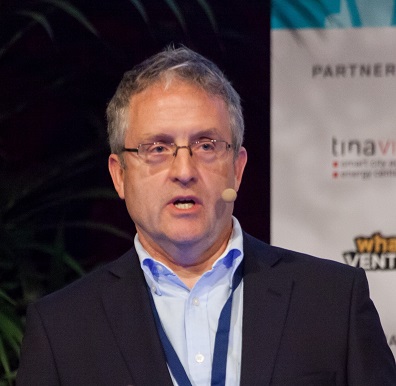Wink recently gave its customers a two-day deadline to pay a subscription for its services or have them ‘bricked’, digitally blocked. Mark Samuel (MS), CEO of Ezlo Innovation, believes that not only is the “buy a subscription or we brick your device” model the wrong way to treat customers, it is also the wrong revenue model for the industry.
Here he talks to IoT Now’s Jeremy Cowan (JC).
JC: Why are some smart home businesses bricking customers’ devices?
MS: It’s clearly not a good way to run a business, so I would say the only reason for a company to “brick” a customer’s device is if they felt they were left with no other option. In other words, they can’t make their business model work. Businesses built entirely on a hardware model must continue to sell hardware — and service it for years — in order to survive. These days, with so much consumer choice in the smart home market, relying on hardware alone is not a tenable approach — which is illustrated by the number of companies that go out of business every year.
But customers don’t really want hardware. They want the services that the hardware enables. That’s how we approach things at Ezlo. You’ll see a lot more service subscription adoption in smart home going forward, and we’re already using it with our partners in the Energy, Wellness, and Property Management sectors.
JC: It’s a poor way of treating customers, but is it also the wrong revenue model for the smart home industry?
MS: Subscription for services or hardware is not the wrong model, but forced subscription after purchase is definitely the wrong model. The reaction from Wink users to the recent news is evidence of that. Customers are paying for a service, but up to now, the industry has mostly used a hardware-centric model with a one-time fee that is expected to result in years of feature updates and support.

As an industry, we need to change the expectation of consumers. We have partners in several sectors, as I noted above, that white label our products. We use a service subscription model with them, and they extend that to their customers. As long as a user understands the terms of what he or she is signing up for, and a company is delivering services that the customer wants, this model is a win for everyone because the customer is getting their needs met and the provider gets a source of recurring revenue over time.
JC: I don’t want to get into the details of Wink’s customer policy, but looking at the future for smart homes generally, why has the technology struggled for widespread adoption? How can this situation be improved?
MS: Adoption is happening. 41% of people now own a smart speaker or smart display — that’s up over 30% from 2018-2019 — and 38% of people own another type of connected device. To this point, however, if you look at the data, there are two major reasons why people don’t invest in smart home systems. They’re too complicated, and they’re too costly.
The rise of Do-It-Yourself solutions has brought the cost down substantially over the last few years, but there is still a concern on the part of consumers that the value they get would not justify the cost. Why? Because the industry has not done a good job of selling the true value of smart homes. Which brings us back to complexity.
Today, it’s difficult for a novice to understand which devices work with which other devices, which ecosystems are closed, and what products to buy in order to best solve a need. Most consumers who do buy smart products are unknowingly building product silos in their homes.
As an industry, the best thing we can do is have the protocols be invisible to consumers. There are a few platforms — of which Ezlo is one — that allows users the flexibility to incorporate any device across a range of protocols. This allows people to pull all those siloed products together in a single, interoperable system, all controlled from a single interface.
JC: Which smart home technologies will succeed first? And in which geographical markets?
MS: I think it’s clear that smart speakers have found success. As have smart cameras, smart thermostats, and others. As I noted above, adoption is happening and it’s only going to increase. And in my opinion, it’s less about geography than about need. Some people are security conscious, some want to guard against flooding, others want to save energy.

After COVID you will see a rise in elder care solutions, too. Smart home may not have been as widely adopted as experts predicted several years ago, but it’s coming. 42% of house seekers are interested in smart devices. To serve that need, builders will soon make smart devices standard. When “smartness” becomes part of the fabric of the home rather than a device you put inside it, that’s when you will truly see mass adoption.
Mark Samuel, CEO of Ezlo Innovation was talking to editorial director, Jeremy Cowan.
Comment on this article below or via Twitter: @IoTNow_OR @jcIoTnow










